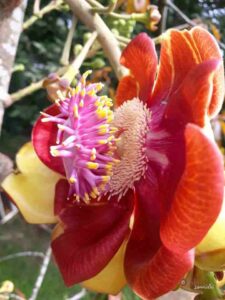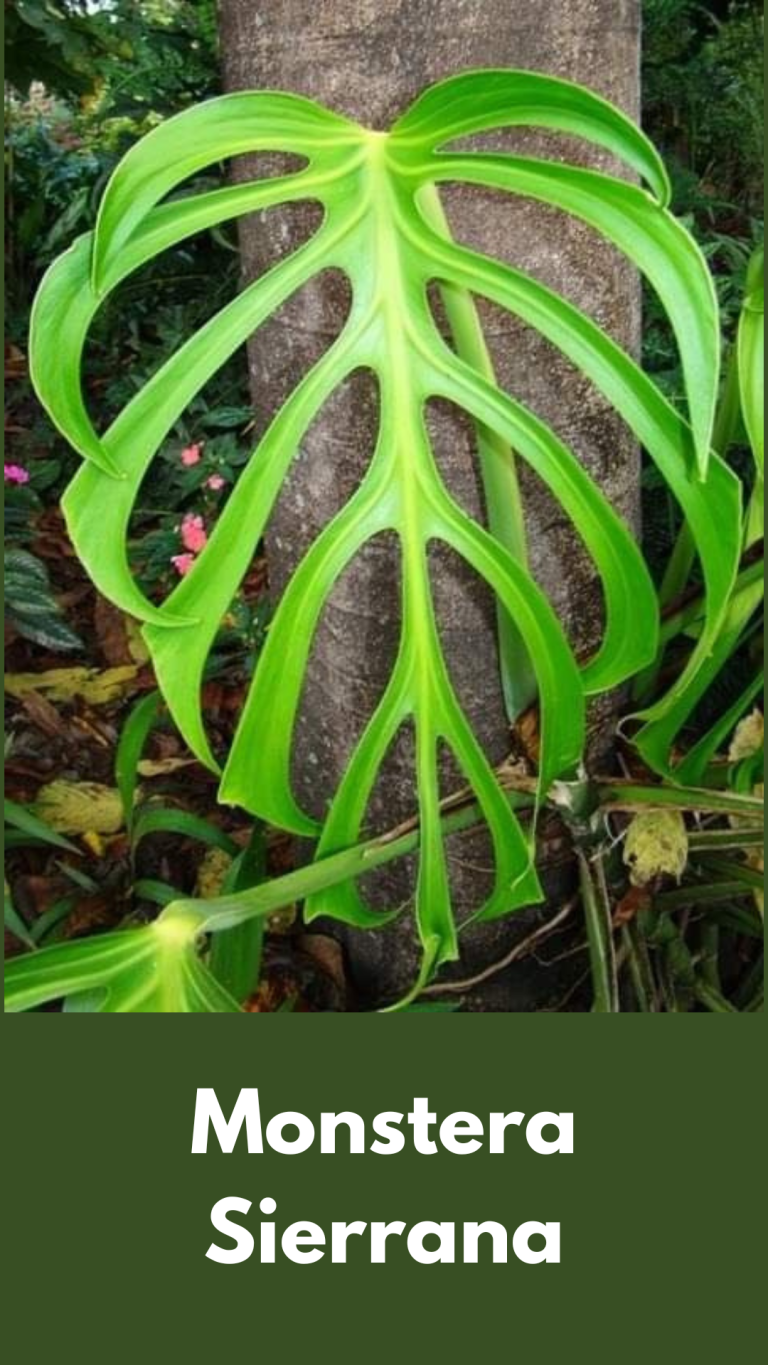Nagalinga Flower
Nagalinga flower commonly known as Cannonball in english is an evergreen tree. This plant is well known for its medicinal and ornamental value. In India, the tree is often regarded as the sacred tree. It is widely grown in botanical gardens as an ornamental plant.

Nagalinga flower belongs to the family lecythidaceae and is native to tropical rainforest of North-eastern South America primarily in the amazon basin. This flower tree is mainly grown in the tropical areas of the country like India, Thailand, Colombia, Panama,Peru, USA etc. It is a tall, soft wooded tree. Since the plant likes wet conditions, it is often called a hygrophyte however the plant also thrives in dry condition. Nagalinga flower trees are most frequently found in wet areas of lowland forest. It is a large tree that usually grows upto the height of 30 m.
Botanical Classification
| Botanical Name | Couroupita guianensis |
| Kingdom | Plantae – Plants |
| Subkingdom | Tracheobionta |
| Division | Magnoliophyta |
| Class | Magnoliopsida |
| Order | Lecythidales |
| Family | Lecythidaceae |
| Genus | Couroupita |
| Species | guianensis |
This tree is known by its different name throughout the world.Some of its popular vernacular names are mentioned below:
Hindi: Nagalinga, Shivlinga, Shiva Kamal, Nagalingam
Marathi: Kailashpati
Indonesia: Sala
Costa rica: Bala De Canon
German: : Kanonenkugelbaum
Peru : Ayahuma
Thai : Sala Lankaa
Due to its high medicinal value and lack of propagation system, this tree is listed as threatened species in IUCN red list.
Religious Values
Nagalinga is made up of two words:- Naga meaning Snake and Linga means idol of Lord Shiva. The petals looks like snake surrounding hood (Refereed as Linga). Offering this flower to Lord Shiva help to purify our sins.
Botany Of Nagalinga Flower
• Flower
The inflorescence of Nagalinga tree is an unbranched raceme but sometimes branched also. Flowers are pedicilate and zygomorphic with 6 calyxes and 6 petals. Flowers are round and may be red, pink or yellow colored.
• Fruit
Fruits are large, averaging 12 to 25 cm ,round and heavy as indicated by its name. The rind is thick, hard and dense and is grey brown in color. They often produce large sounds when falling to the earth. The fruits are like cannonballs and they grow in masses from stalks arising from the trunk. Fruits usually take 18 months to attain maturity.
• Leaves
Nagalinga flower trees bear oval, oblong leaves. Leaves are simple, alternate with slightly serrate margin. The leaves are upto 10 cm long.
Growing Methods
Nagalinga Flower Tree can be grown by following any of the method explained below:-
• Seed
Nagalinga trees are conventionally propagated through seed. However, seeds have poor viability and have short lifespan due to recalcitrant type.. So, seed Propagation is not recommended.
• Vegetative Propagation by Stem cutting
In the Cannonball tree, vegetative propagation is usually done by stem cutting.
Growing Cannonball (Nagalinga) Trees At Home
Due to its scented flower, people often grow it in their house. The procedure to grow it in home are mentioned below:
• Selection of a container
Since cannonball trees are fast growing trees, the container of the right size should be selected. The selected pot should be at least 18 cm in diameter. Plant one tree per pot ensuring the sufficient nutrient.
• Soil as a media
Mixture of soil, perlite and sand can be used as a growing medium.
• Ensure the availability of light
Nagalinga Flower requires a bright and direct sun. Plant performs well in 12 hours of daylight. However, the plant performance was also found good under 30% shade condition. While growing indoors, the plant should be placed in a bright and sunny window.
• Timely watering
Timely watering is essential to maintain the proper growth of plants. Over and under watering may kill your plant. So watering should be done in accordance with the moisture requirement of the crop. It should be kept in mind that the Cannonball tree performs well in wet conditions but not in waterlogged conditions.
• Proper fertilization
Cannonball trees are moderate feeders and should be fertilized after watering.
Benefits Of Nagalinga
Traditionally, Cannonball (Nagalinga) trees are used for medicine throughout the globe. Some other benefits of this tree are depicted below:
• This tree also has cultural importance. In India, it is considered as sacred and found widely in Lord Shiva temples.
• The plant parts have been utilized by natives to treat the human illness like Tumors, Scabies, Malaria, Inflammatory process, Hypertension, hemorrhage and skin diseases.
• Its plant parts are also utilized to treat the microbial infection.
• The tree is also rich in phytochemicals.
• The flowers of these trees are also used in cosmetics as they are rich in scent.
• The wood of this tree is often used to make toys and things like that.
Final Verdict
Nagalinga flower tree is a worthy tree of multiple use. It is a beautiful flower that gives aesthetic pleasure. So, You can plant it on your garden to make it more beautiful.
You May Like These Articles
Pineapple Farming : Farming Of Pineapple Fruit



As per vastu In which direction we can plant in agriculture land
Nice to study in this article